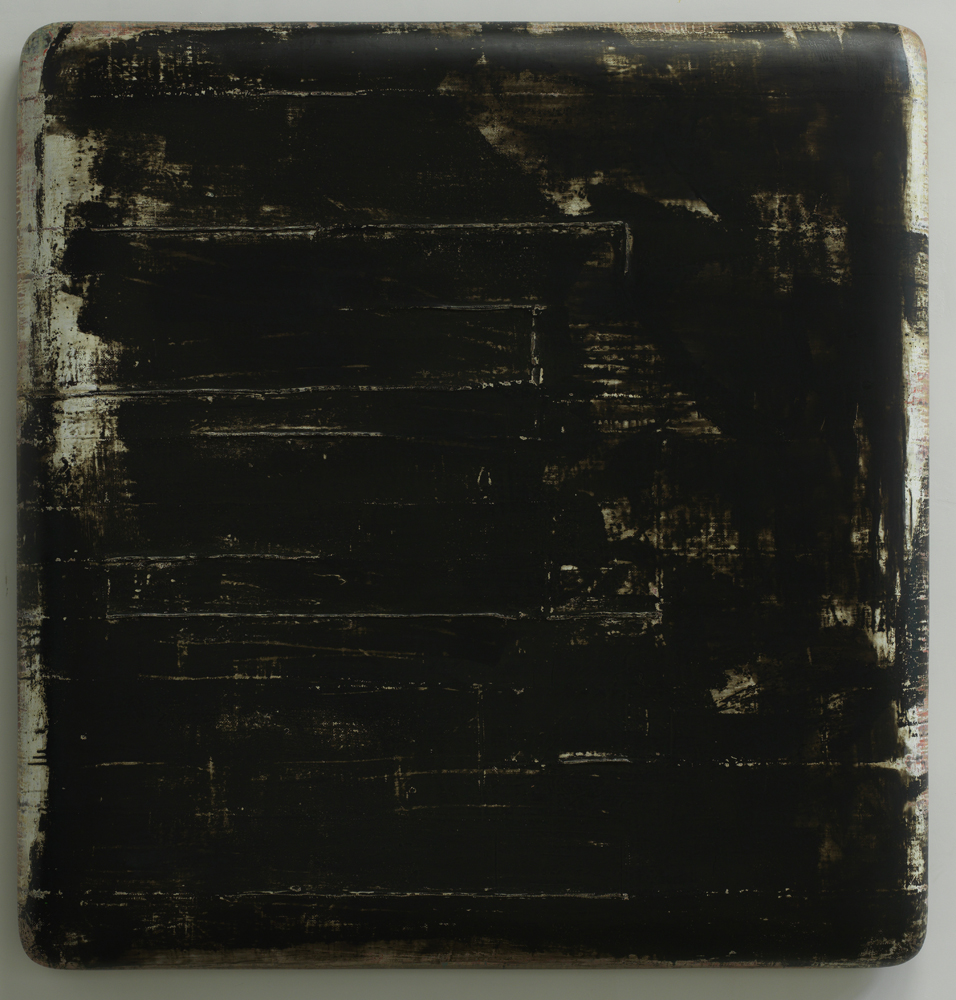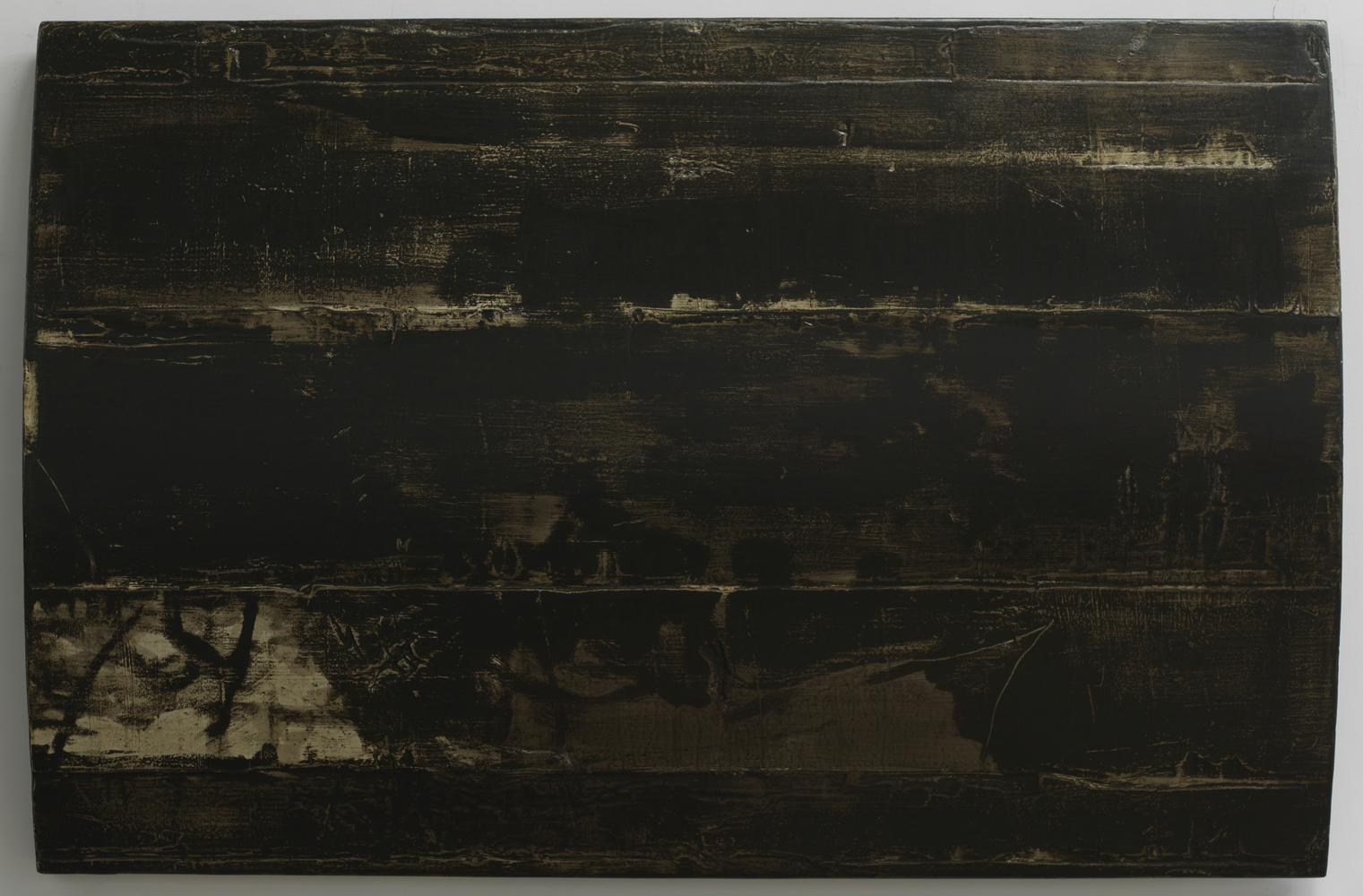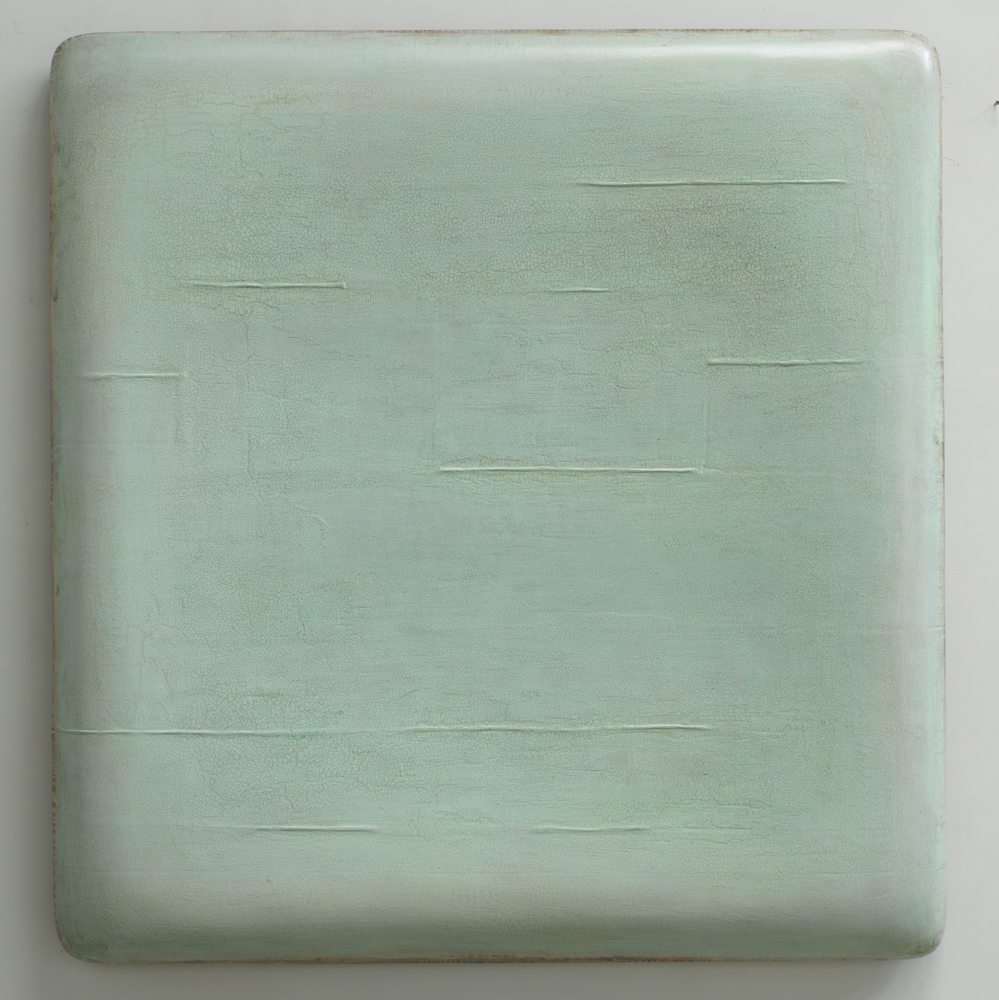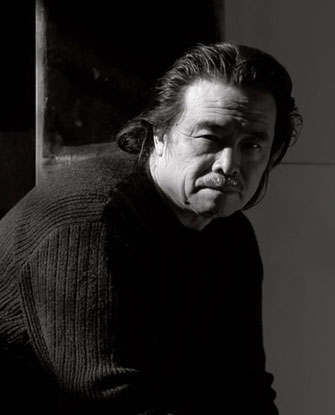| 1949年 |
birth Xiaobai Su was born in Wuhan in the scorching August heat as the son of two young college graduates. His father attended Nankai University, and his mother Beijing Normal University. Their original domiciles were respectively Jinjing and Zhaozhou, both in Hebei Province. So the Hebei dialect was their domestic language;
|
| 1950年 |
one year old The birth of Xiaobai Su held his parents up in Wuhan. His father served as dean in a German mission school—the Holy Trinity College of Wuhan (now the No.6 Middle School of Wuhan).After his second birthday, he was carried away by his maternal grandmother and lived with his maternal grandparents, who were both devout Catholics. His maternal grandfather worked in the Railway Bureau of Zhengzhou;
|
| 1955年 |
six years old Xiaobai Su moved to Wuhan with his retired maternal grandparents. He attended the church choir of the city and was baptized and christened by a priest at a local church. His Christian name was used only once in the following fifty years or so. (When he was inquired about it at the Basilica of Our Lady when climbing Mount She in Shanghai in 2008, he just answered without the slightest hesitation.);
|
| 1956年 |
seven years old Su entered primary school.The oral part of the entry test required the children to count from one to ten. Those who were regarded as top students could count up to twenty;
|
| 1958年 |
nine years old Su experienced the Great Leap Forward Movement and the Mass Steal Production Drive. He identified and collected crushed fire-retardant bricks and iron slag. He witnessed the whole process of melting the ornamental cast-iron gate of the Holy Trinity College to incandescent sponge iron, which was then poured out of the furnace to be cooled. He began to play truant and was fascinated by the transformation of various substances in all circumstances;
|
| 1962年 |
thirteen years old Su entered middle school.Three anecdotes about him: First, he felt constantly hungry. Second, he became aware that he was of bad class origin and was extremely introverted and reserved. Third, he studied diligently, without any preference for any course. His academic performance was excellent. Zheng Zhao, the principal, examined students’ marks in the school corridor. In the academic record, Su’s were unbelievably uniform: he got five points for the seventeen courses, all of which had the five-point marking system. Seventeen fives written hastily in the list looked as if they were fake. In the ensuing home visit, Zheng met Su’s father. Both of them were among the most politically active of Nankai University students in the 1940s. Yet they belonged to rival parties;
|
| 1965年 |
sixteen years old Su was admitted to the School of Arts and Crafts of Wuhan. (Earlier, Su’s father had had a long conversation with his son, confessing his historical conflicts with both the Kuomintang and the Communist Party of China, which shattered Su’s dream of going to high school and college.) The Arts and Crafts School of Wuhan was newly established, lacking teaching aids and reading resources. Luckily, there were professionally qualified teachers, who were banished to the school from art colleges due to their non-Communist belief, and graduates fresh from academies of arts. Su only took a few art courses but found them interesting. As Su recalls, he had only fifty or so periods but was deeply influenced by them. All the professional trainings in his later years are virtually the prolongation of these fifty periods of art lessons;
|
| 1966年 |
seventeen years old The great Cultural Revolution broke out.The students, who did not have many professional art courses from the beginning, had to suffer from a years-long class suspension. During the hiatus, Su wrote big-character posters and participated in political debates. He ransacked people’s residences and confiscated their property, and the same thing happened to his parents. He went to other cities and provinces, establishing relations with other revolutionaries. In Beijing, he joined thousands of revolutionary youngsters and took part in massive rallies presided over by political leaders. He went on a pilgrimage to Shaoshan, Hunan Province, the birthplace of Chairman Mao, to show his loyalty to Communism. On the way, he edited and distributed The Long March, a mimeographed newspaper printed by means of steel letterpress. Before reaching the destination, he left his team without permission and joined a band of workers whom he had never met before and who were paving railroads in Shaoshan. A week later, he realized his mistake and attempted to catch up with his team but failed;
|
| 1967-1968年 |
eighteen years old Su did a good many propaganda paintings. His primitive understanding of oil colors stemmed completely from painting the massive portraits of political leaders. Even the painting of a shirt button required climbing up and down the scaffold. Twenty years later, he went to Germany, a country that had undergone a sweeping student movement (i.e., the Movement of 1968). There, he was regarded as a veteran who had survived a great political campaign, that is, the Cultural Revolution and as a biased, controversial yet popular narrator of the Cultural Revolution stories;
|
| 1969年 |
twenty years old Su graduated from the Arts and Crafts School of Wuhan.He was transferred to the Wuhan Workshop of Gongs as a punishment;
|
| 1972年 |
twenty-three years old Su was transferred to the Art Workshop under the Urban Cultural Center of Wuhan.He painted the oil painting, “The Standard Bearer,” which was on display at the regional art exhibition, In Commemoration of the Thirtieth Anniversary of Chairman Mao’s Address at the Forum of Art and Literature in Yan’an. This job put a closed library at his disposal;
|
| 1974年 |
twenty-five years old.Su was transferred again. This time, he worked as a designer at the Gold and Silver Jewelry Workshop of Wuhan.His job as a jewelry designer brought about the opportunity for him to learn folk craftsmanship in many frontier regions.In the Arts and Crafts Jewelry Company of Beijing, he met artist Zhang Hongtu, who later resided in New York;
|
| 1976年 |
twenty-seven years old The Cultural Revolution was officially brought to an end. Su was transferred to the Wuhan Artists Association;
Taking the chances to experience all walks of life and enhance painting skills, Xiaobai Su traveled in the mountainous regions of Taihang and Luliang and the valleys of the Yellow and Yangtze rivers, painting a great many pictures from nature;
|
| 1979年 |
thirty years old Su participated in the exhibition, In Commemoration of the Thirtieth Anniversary of the Founding of the People’s Republic of China;
He got acquainted with Tao Yongbai from the Institute of Fine Arts under the China Art Academy;
He married Ms. Zhang Hong;
|
| 1980年 |
thirty-one years old Su’s oil painting, “Student Years,” won a third prize in the Second National Exhibition of Young Artists’ Works;
He attended the Symposium for Chinese Young Oil Painters in Beijing;
|
| 1982年 |
thirty-three years old Su begot a son and named him Su Baixi;
His plan for an art project was approved by the Wuhan Artists Association. He went to rural Hebei to experience country life for half a year;
He was admitted to the China Artists Association;
|
| 1983年 |
thirty-four years old Su painted oil paintings like “Intoxicated,” “Circus,” “Temple Fair,” and “Village.”;
Artists’ Newsletter published an article about Su’s views on artistic creation. He was exceptionally prolific in this year;
|
| 1984年 |
thirty-five years old Su received a bronze medal in the Sixth National Exhibition of Artworks for his oil painting, “At Auntie’s,” which is now housed by the National Art Museum of China in Beijing;
His comic strips, “Big Ma and Little Ma” and “Where to Settle Down,” won him merit awards in the Sixth National Exhibition of Artworks;
When the Oil Painting section of the Exhibition moved to Shenyang, Su went there, only to be pushed to a corner of the exhibition hall by the swarms of visitors. Meanwhile he encountered Tang Xiaohe from the Hubei Institute of Fine Arts. Tang’s three remarks for Su were to determine the latter’s life course in the following several years;
|
| 1985年 |
thirty-six years old Su was transferred to the Oil Painting Studio under the Hubei Institute of Fine Arts and worked as a professional artist;
He went to Kehu Village in Lin County, Shanxi Province to experience country life and paint from nature. He stayed there for three months;
In May, he attended the National Symposium of Oil Painting in Huangshan (i.e., Mount Yellow);
In July, he received a letter from Prof. Zhu Naizheng of the China Central Academy of Fine Arts, asking whether he was going to apply for the graduate program offered by the Department of Oil Painting of the Academy;
In September, he was admitted to the Graduate Program of the Department of Oil Painting, China Central Academy of Fine Arts, Beijing, in the grade of 1985. Prof. Zhong Han was his class advisor;
|
| 1986年 |
thirty-seven years old Su painted serial paintings like “Stage” and “Window.”;
The Exhibition of Modern Oil Painting was held at the National Art Museum of China in Beijing;
|
| 1987年 |
thirty-eight years old Su painted serial oil paintings like “Grottoes” and “Flying Apsaras.”;
He was awarded a scholarship of the Ministry of Culture, North Rhine-Westphalia, Germany and was enrolled in the State Academy of Fine Arts, Dusseldorf;
Su discontinued his studies in the China Central Academy of Fine Arts and left the school, which broke the heart of Prof. Zhong Han. In the early spring of the same year, he went to the German Center of Tongji University and spent more than three months there on language training;
Before he set out, Mr. Wu Guanzhong told him, “Keep this letter of recommendation with you and bear in mind that first, you should come back as soon as you finish your studies; and second, the center of art will be none other than China in the future.” At that time, there was not a single freelance art studio or gallery yet in the entire city of Beijing;
In September, he went to Europe by train, taking with him several books and carrying a roll of canvas on his shoulder;
In October, he officially registered himself at the State Academy of Fine Arts, Dusseldorf and joined Konrad Klapheck’s studio, which marked the beginning of his five years’ career as an overseas student;
|
| 1988年 |
thirty-nine years old Su’s solo exhibition, The World in the Eyes of a Chinese Artist: The Exhibition of Xiaobai Su, was held at the City Library of Dusseldorf;
The exhibition, The Artworks of Xiaobai Su, was held at Gallery Haidenheim, Dusseldorf.Mr. Haidenheim was the first gallery proprietor to host a solo exhibition for Su. He hosted altogether three for him, the other two respectively in 1990 and 1993. At the end of 1994, before he closed his gallery, he held a comprehensive retrospective exhibition for Su. Mr. Haidenheim was a German Jew and an artist. He once recommended Su to Leo Castelli, a New York art dealer. After his gallery went out of business, the elderly Mr. Haidenheim still took particular interest in Su’s artworks in different periods and collected some of them;
|
| 1989年 |
forty years old In April, the exhibition, The Door Wide Open: The Recent Artworks of Xiaobai Su, was held at the City Theatre of Duisburg;
In June, a mental breakdown struck Su, who was just in high spirits. His art production turned stagnant;
In August, accompanied by his German friends, he went to the Chiemsee, a lake in the Alps Valley, where he worked on several small landscape paintings in low spirits. He spent his fortieth birthday locking himself up in a wooden house;
In October, he divorced his wife and moved from Dusseldorf to Duren;
In November, the Berlin Wall was torn down. East and West Germany were to be reunited soon;
His application for participating in the annual exhibition of the Dusseldorf Artists Association was rejected;
|
| 1990年 |
forty-one years old In February, Su transferred to the studio of Markus Luepertz, president of the State Academy of Fine Arts, Dusseldorf;
In April, he won the annual award of the German Academy of Fine Arts. He went to the German Artist Workshop in la Cite des Arts, Paris and stayed there for six months;
In October, he visited British artist Francis Bacon in London, who was introduced to him by his German supervisor;
In December, Prof. Zhan Jianjun of the China Central Academy of Fine Arts won the DAAD award and visited Germany. He lived in Duren for some time. Zhan’s visit enabled Su to resume his contact with like-minded friends in China’s mainland;
|
| 1991年 |
forty-two years old In January, Su transferred to Gerhard Richter’s studio for a class under the guidance of the master;
In April, he visited the Art Institute of Ohio in the Unite States. (In early 1987, Su obtained art scholarships from the Art Institute of Ohio and that of North Rhine-Westphalia. He knew little about the two institutes. The choice was but an indiscriminate one between the two languages, German and English.);
In May, he visited Leo Castelli in a New York gallery;
In December, he got acquainted with Karl-Herman Klock, an art collector from Duisburg. He has collected most of Su’s wash paintings. Su almost never shows his paintings of this kind to others and only enjoys communicating with Klock intellectually;
|
| 1992年 |
forty-three years old In July, Su graduated from the State Academy of Fine Arts, Dusseldorf with a certificate of Master’s Pupil and a master’s degree;
In the same month, he received a KSK certificate: the social insurance qualification for the professional life of freelance artists;
In August, he moved from Duren to Solingen;
In October, Su Baixi, ten years old then, came to Germany to live with his father and studied at Solingen Primary School;
Xiaobai Su participated in the Exhibition of the Collection of the National Art Museum of China in Beijing;
|
| 1993年 |
forty-four years old In June, Su visited China with Konrad Klapheck, a professor of the State Academy of Fine Arts, Dusseldorf;
In October, he received ten artist friends from his homeland, including Su Tianci, Wang Huaiqin, Shang Yang, and Ai Xuan, in Germany. They attended the International Art Festival in Heimbach. This was the first time that Su had had a gathering with his Chinese friends after moving overseas. Over the next few years, he co-organized several similar camps for artistic creation. This has been the major activity in which he links himself with Chinese artists;
|
| 1994年 |
forty-five years old In September, Su purchased the Linderan Manor. Linderan, originally a small German country school established at the sloping crossover of two villages in the year 1937, is marked in the Map of Germany as fairly close to the border of Luxembourg. The manor house was in a state of disrepair and desperately needed thorough revamping. Utilizing fine German machinery, he turned the Linderan Manor into a grand artwork after having exhausted almost all the skills that he had practiced in China, except steel-melting;
In October, Zhang Hongtu and Huang Miaoling from New York visited Linderan and made do with crude shakedowns;
In December, Zhong Han and Dr. Tang from Beijing visited Linderan and made do with comfortable shakedowns;
|
| 1995年 |
forty-six years old In March and April, Su did early spring planting. He planted ten oak trees, ten bodhis, thirty beeches, some ginkgos, red maples, white birches, deodar cedars, and about forty fruiters. Two stripes of bushes, both more than 800 meters long, ran along the sides of the courtyard;
In the same year, he joined the Dusseldorf Artists Association;
In November, he received a five-man delegation of the China Artists Association;
In December, the Exhibition of Xiaobai Su Artworks was held at Gallery Peter Tedden, Dusseldorf. Later, in 1997 and at the end of 1999, he had three solo exhibitions at the same gallery;
|
| 1996年 |
forty-seven years old At the beginning of this year, Su set up room for ink-wash painting at the Linderan Manor;
In May, he visited Beijing and Shandong with a North Rhine-Westphalia delegation of artists;
In October, Prof. J. Immendorff and some alumni of the State Academy of Fine Arts, Dusseldorf visited the Linderan Manor;
In the same month, Peter Ludwig, a collector from Cologne, and his wife visited the Linderan Manor.
|
| 1997年 |
forty-eight years old At Linderan and away from his homeland, Su reached a miraculous balance between his internal and external worlds. Life in Germany was similar every day. He kept this “real state” deliberately. Despite the quietness and loneliness, he looked contentedly unregretful. He re-perused the Bible, recalled the semantic references to the biblical sentences that he had read as a child, and explored The Communist Manifesto for the subtle differences between the original text and its Chinese translations…;
It was in this year that the concrete forms in his paintings gradually faded out, and abstract tableaux emerged. He claimed “they are anything and nothing at once.”;
He married Ms. Zhang Jun;
|
| 1998年 |
forty-nine years old The Exhibition of Xiaobai Su’s Paintings: The Most of the Least was held at Gallery S. Albrecht, Munich. The gallery later exhibited his artworks three times in the years 2000 and 2002;
Invited by the China Artists Association, the China Central Academy of Fine Arts, and the Goethe Institute, he visited China with Prof. Klapheck of the State Academy of Fine Arts, Dusseldorf;
His artworks were included in Chinese Oil Paintings in the 20th Century, Collected Works of Modern Chinese Fine Arts, and Choice Collection of the National Art Museum of China.He adopted German nationality.The adoption of foreign nationality implied that he must give up his Chinese nationality. For this matter, he consulted Li Shilong, then cultural attache of the Chinese Embassy at Bonn. He asked falteringly whether he could re-adopt Chinese nationality in the future. Li answered bluntly, “It would be a likely story.” Two years later, Li Yang, then an overseas student in Germany and now a film director, raised the same question as Su’s;
|
| 1999年 |
fifty years old A building at Linderan was struck by lightning;
Su was invited to be a special referee for the annual exhibition of the Dusseldorf Artists Association;
In May, he visited China with a North Rhine-Westphalia delegation of artists and had some of his artworks exhibited at the Yanhuang Art Gallery of Beijing;
In August, he joined the First Bremen International Sculpturing Camp in Germany and completed the sculpture, “Big Gong.”The Exhibition of Xiaobai Su’s Artworks was held at Gallery ambit in Barcelona, Spain;
He got acquainted with Spanish artist Antoni Tapies;
He visited Fuzhou and came to know Chinese lacquer;
|
| 2000年 |
fifty-one years old The Exhibition of Xiaobai Su’s Artworks was held at Gallery Alain Noirhomme in Brussels, Belgium;
The Exhibition of Xiaobai Su’s Artworks was held at the Badem Museum in Solingen, Germany;
He participated in the Exhibition of Chinese Oil Paintings in the 20th Century, which was held by the National Art Museum of China;
In October, supported by the German Cultural Creation Foundation, he organized a creative symposium at the Linderan Manor for artists from China, Germany, the United Sates, and France. In the same year, he curated a group exhibition for artists from these four countries at the Beda Museum, Bitburg;
At the end of this year, he went to the United Sates to visit his fellow students;
|
| 2001年 |
fifty-two years old Su begot a daughter, Su Bailin. Villagers planted trees on the meadow of Linderan;
The Linderan Manor won the title of the Most Beautiful Manor of 2000 in the State of Rhineland-Palatinate;
The Exhibition of Xiaobai Su’s Artworks was held at Gallery Bethovenstrasse, Dusseldorf;
He won the Award of the Dusseldorf Artists Association and worked at M. Ernst’s Artists Studio in la Cite des Arts, Paris for three months, during which time he finished a massive combined ink-wash painting;
|
| 2002年 |
fifty-three years old The Exhibition of Xiaobai Su’s Artworks was held at the Congress Centrum, Mainz, Germany;
He participated in the Present Form of Art, which was hosted by the Congress Hall, Berlin, Germany;
He participated in the international art exposition, Art Cologne, in Germany;
The Exhibition of Xiaobai Su’s Artworks was held at Gallery Schmalfuss, Marburg, Germany;
In July, he visited Tibet with a North Rhine-Westphalia delegation of artists;
At the end of this year, a village election in Linderan took place. He was prompted by some villagers to run for the village committee membership;
|
| 2003年 |
fifty-four years old The filming crew of an art and literature program from a German TV channel was stationed at the Linderan Manor, shooting a feature story, Ginkgo and Bodhi;
Su participated in the First Beijing International Art Biennale with his oil painting, “Net of Memory.”;
At the invitation of the Hubei Institute of Fine Arts, he visited China and delivered lectures there with Jerry Zeniuk, a professor at the Munich Academy of Fine Arts;
The Exhibition of Xiaobai Su’s New Artworks: The Pillar of China was held at Gallery Bethovenstrasse, Dusseldorf;
|
| 2004年 |
fifty-five years old In May, Su joined the Second Bremen International Sculpturing Camp in Germany and completed the sculpture, “Wooden Drums.”;
In July and August, he received some of his Chinese artist friends, including Zhan Jianjun, Zhu Naizheng, Chen Danqing, and Yang Feiyun;
In September, he received some alumni of the School of Arts and Crafts of Wuhan, including Guo Shijun, Yu Yebin, Chen Zongyao, and Sun Houming;
In October and the following five months, at the invitation of Fuzhou University, he went to Fuzhou to deliver lectures. He transformed an old machinery plant successfully into an art studio. With the help of local young artists and lacquerers and by chiefly using raw lacquer, he finally finished the first batch of comprehensive paintings, such as “1/2 Red ,1/2 Blue”,“Black between Red”, “Large T” and “20 Emerald Brands”;
In the same year, he participated in the Abstract Art Exhibition, which was held by the Shanghai Art Museum;
|
| 2005年 |
fifty-six years old In April, some German friends, notably critic and art museum director K. Gallwitz and artists K. Klapheck and A. Kiefer, visited Linderan. They were the last visitors to the place. In the same year, Su changed his residence again. He went back to Dusseldorf, where he had lived, and purchased an apartment on the bank of the Rhine River. Two years, during which time the Linderan Manor was left uninhabited, then passed before it was finally given up and sold in 2007. Luxembourgian multimedia artist A. Schumacher bought it as a filming base;
In July, Su visited his artist friends and teachers in East and West Germany, such as G. Graubner, M. Luepertz, J. Immendorff, and G. Baselitz. At that time, the idea of leaving occurred to him. Germany might be his second hometown, but he decided to live somewhere else;
In November, he participated in the first interactive creative symposium for artists from China and Germany at Mount Wuyi;
In December, he finished the draft of an autobiographic painting catalogue, “Xiaobai Su 2005”;
|
| 2006年 |
fifty-seven years old In January, Su established a studio in Shanghai and finished paintings like “Black Crescent”, “Red Drum”, “Nobleness” and “Chu-Palace” chiefly using lacquer and linen;
In April, the exhibition, Lacquer: Xiaobai Su’s New Epoch, was held at Gallery Bethovenstrasse, Dusseldorf;
In July, the Exhibition of Xiaobai Su’s Artworks was held at Gallery Schmalfuss, Marburg;
In October, Images of Wuyi: A Group Exhibition of Chinese and German Artists’ Artworks was held at the Shanghai Art Museum;
In November, Here and Beyond: A Group Exhibition of Eleven Chinese and German Contemporary Artists’ Artworks was held at the Shanghai Sanxian Art Space;
In December, a seminar on Xiaobai Su’s artworks was held among twenty-five art critics from Beijing and Shanghai, such as Shui Tianzhong, Tao Yongbai, and Jia Fangzhou;
In December, the transcript of Bai Xi’s interview with Xiaobai Su, “The Artworks Are the Artist’s Life”, was published in the winter 2006 edition of , a literary magazine;
|
| 2007年 |
fifty-eight years old In March, "Intangible Greats", An Exhibition of Xiaobai Su’s Paintings was held at the Shanghai Art Museum;
The album, Intangible Greats, was published;
"Corresponding and Responding": An Exhibition for Artists from China and America was held at the National Art Museum of China in Beijing;
The exhibition, China Abstract, was held at the Beijing Lin & Kang Art Gallery;
Su attended the Seminar on Chinese Abstract Arts in the Previous Thirty Years;
He participated in Art Beijing: Beijing Art Exposition;
Wish You a Safe Journey: An Exhibition of Xiaobai Su’s Paintings was held at Gallery R. Kammer, Hamburg;
Red Mountains and Green Rivers: A Group Exhibition of Modern Chinese and German Artists’ Paintings was held at the Lubeck Museum in Germany;
From September to the end of this year, Su produced artworks like “Peace of Mind,” “The Ancient Battlefield Chibi,” “Seeking Love,” and “Burying the Hatchet” at his Shanghai studio;
|
| 2008年 |
fifty-nine years Old From January to April, Su worked at his Shanghai studio and produced artworks like “Great Consummation,” “Virgin Bride,” and “Carved Color Lacquer.”;
In May, the exhibition, Clarify My Mind to View the World: A Solo Exhibition of Xiaobai Su, was held at the Lin & Kang Art Gallery in Beijing and Taipei;
The exhibition, The Imagism: Chinese Abstract Arts in the Previous Thirty Years, was held in Madrid and Barcelona, Spain;
In June, M. Schaechter, director of ZDF, a national German TV channel, visited Su’s Shanghai studio with his planning staff;
In July, Su returned to Germany to curate the Tour Exhibition of Xiaobai Su’s Artworks, which was hosted by ZDF;
In September, he participated in Art Beijing: Beijing Art Exposition;
The exhibition, In and Out of the Image, was held at the Yuxin Art Gallery in Singapore;
He participated in art expositions in Shanghai, Taipei, and Singapore;
In December, the Exhibition of Xiaobai Su’s Artworks was held at the Today Art Museum in Beijing;
|









